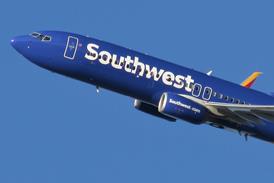Tim Furniss/LONDON
A second Proton DM booster equipped with Block 2 second-stage engines was launched from Baikonur on 4 July, paving the way for the long-awaited Russian launch of the International Space Station's (ISS) Zvezda service module on 12 July.
The four-stage Proton carried a Reshetnev-built Geyser military communications satellite into geostationary orbit. A three-stage Proton will launch Zvezda, which will dock to the ISS Unity-Zarya module combination on 22 July (Flight International, 4-10 July).
NASA will then be able to fly Space Shuttles to begin further assembly of the ISS. The Atlantis will lift off in early September to prepare the ISS for the visit by the first expedition crew, to be launched on a Soyuz in October. This will be preceded by a Discovery flight to begin assembly of the ISS's truss-framework structure.
In November, the orbiter Endeavour will deliver the first central solar-array assembly. Atlantis will fly again in January, carrying the US Laboratory Module, Destiny, while in February an unmanned Soyuz booster will be used to carry an airlock and crane to the ISS.
The Geyser launch was the third by a Proton in 10 days and followed the flight of the first Sirius Satellite Radio spacecraft on 30 June on a flight operated by International Launch Services (ILS). It was the 15th ILS Proton launch since 1996.
The 3,800kg (8,370lb) Space Systems/Loral-built satellite is the first of three planned by New York-based Sirius. The digital radio broadcasting satellite will provide seamless, coast-to-coast coverage across the USA. The three Sirius satellites will beam 100 channels of audio programming to receivers in cars. The system will make its commercial debut in early 2001, offering 50 channels of music and up to 50 news, sports and entertainment channels at a cost of $9.95 a month.
Rather than operate from equatorial geostationary orbits, Sirius spacecraft will operate from elliptical 23,800 x 46,700km (14,800 x 29,000 mile) orbits, inclined to the equator by 63.4°. This orbit provides the required high angle between the satellite and the user, avoiding potential interruptions by buildings and other obstacles.
Sirius 2 and Sirius 3 are set for Proton launches in September and October. Competitor XM Radio is to launch its first satellite on a Sea Launch Zenit 3SL in November.
Source: Flight International























